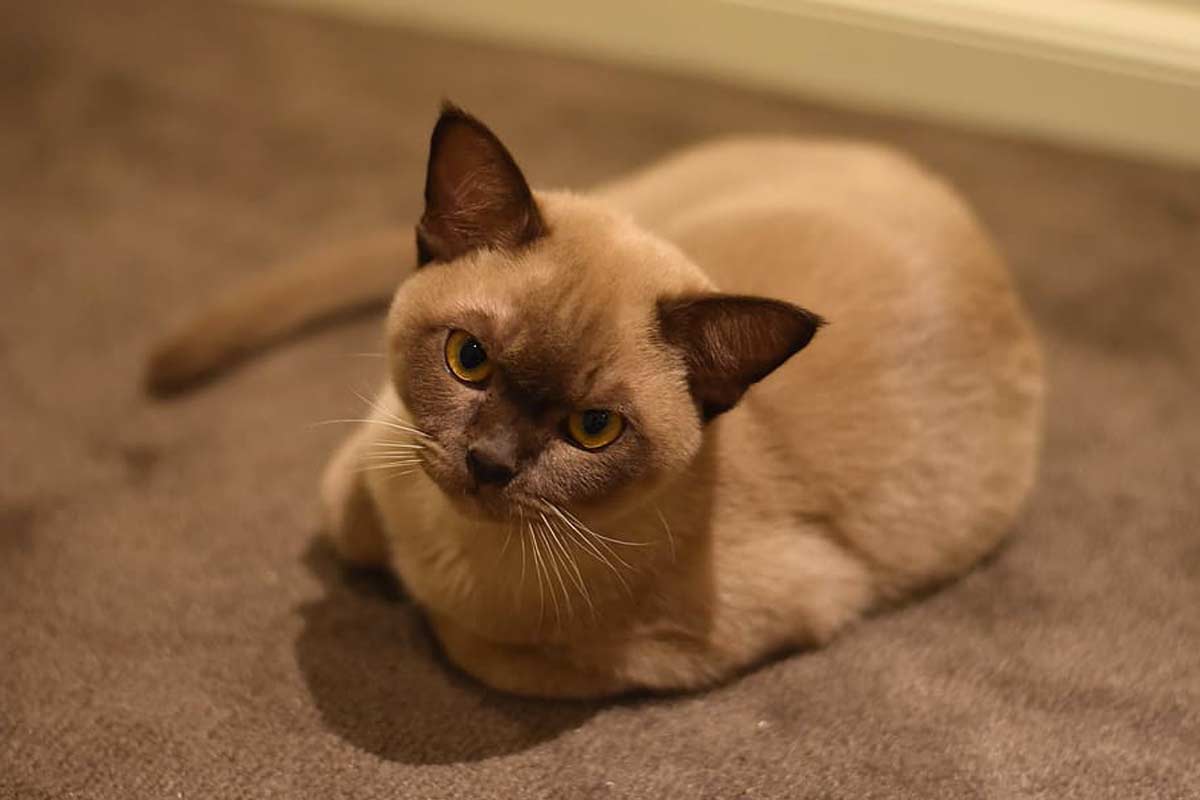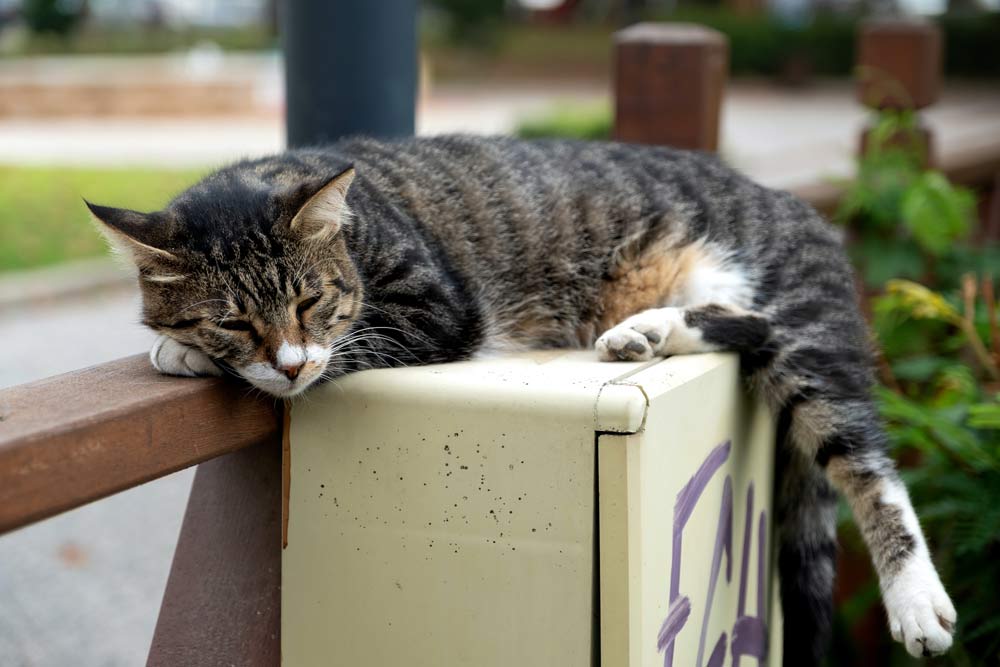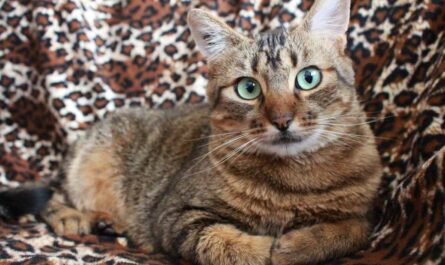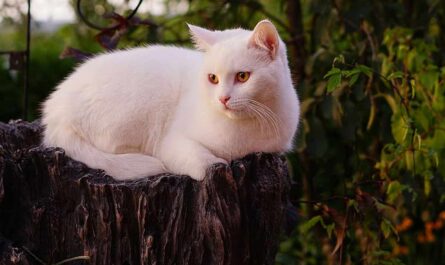How to tell if your cat can’t breathe? Remaining vigilant and attuned to the myriad signals of respiratory distress in cats is an indispensable aspect of responsible cat ownership. These discernible signs outlined above provide a comprehensive framework for cat owners to identify potential respiratory issues promptly. Early detection facilitates timely veterinary intervention, ensuring the well-being of feline companions and enhancing the efficacy of medical treatments tailored to address specific respiratory challenges. This article will share some tips on how to tell if your cat can’t breathe. Keep reading.
Recognizing Signs of Respiratory Distress in Cats
One of the paramount responsibilities of a cat owner is to remain vigilant and attuned to their feline companion’s well-being. Recognizing signs of respiratory distress is crucial, as it can be indicative of various underlying health issues. Here are some discernible signals that may suggest your cat is experiencing difficulties in breathing.
1. Persistent Coughing and Wheezing
Among the crucial aspects of feline care, vigilance towards the well-being of your cat stands paramount. In this context, recognizing signs of respiratory distress becomes a pivotal responsibility for any cat owner. The manifestation of persistent coughing or wheezing, especially if your usually silent feline friend suddenly becomes vocally distressed, serves as an initial indicator. Such audible discomfort may be the outward manifestation of an array of respiratory issues, spanning infections, allergies, or even the presence of feline asthma.
2. Rapid or Labored Breathing
Embarking on a more nuanced exploration into the intricacies of feline health demands a meticulous examination of your cat’s breathing dynamics. The inherent steadiness and rhythmic nature of a cat’s respiration establish a baseline against which any deviations become conspicuous and, in turn, warrant heightened vigilance. The abrupt escalation in breathing rate or the manifestation of labored breaths unfurls a tapestry of concern, signaling a departure from the expected norm. Identifying such deviations necessitates a rapid and thorough investigation into potential underlying issues that might underpin these respiratory irregularities.
3. Shallow Breaths
In the realm of feline grace and agility, the subtlety of shallow breathing assumes a paramount role as a telltale sign of respiratory distress. The cat, renowned for its poised demeanor, may betray an underlying issue when observed engaging in shallow breaths. This seemingly inconspicuous manifestation can hint at possible airway obstructions or latent lung complications, injecting an element of urgency into the discerning eye of the cat owner.
4. Nostril Flaring
Exercising a discerning eye, an attentive cat guardian should extend their scrutiny to the feline nostrils, observing for any signs of flaring during the breathing process. Nostril flaring, often underestimated, can be a visual key unlocking the door to respiratory distress. Abnormally widened nostrils point to an escalated effort in drawing in air, raising a metaphorical flag that signals an urgent need for investigation. The subtlety of this visual cue belies its significance, as it may unveil underlying problems that could elude a less meticulous observer.
5. Open-Mouth Breathing
In the intricate tapestry of feline respiratory behavior, the emergence of open-mouth breathing stands out as a disconcerting anomaly. Given that cats are obligate nose breathers, their reliance on nasal respiration is a fundamental aspect of their respiratory physiology. The manifestation of open-mouth breathing thus serves as a visceral red flag, suggesting the presence of a severe respiratory issue demanding immediate attention. This atypical behavior may be indicative of an obstruction or inflammation within the respiratory tract, casting a looming shadow over the well-being of your feline companion. The gravity of this deviation necessitates swift intervention and a thorough investigative approach to unravel the intricate threads of potential threats to your cat’s health.
6. Cyanosis (Blue Tinge to Gums or Tongue)
A disconcerting manifestation of respiratory compromise in cats is cyanosis, a condition characterized by a distinct bluish tint on the gums or tongue. This visual cue is an alarming sign of insufficient oxygenation, suggesting a malfunction within the respiratory system. When confronted with this ominous discoloration, prompt veterinary intervention becomes imperative. Addressing the underlying cause promptly is crucial to mitigate potential complications and safeguard the overall health of your feline companion.
7. Restlessness and Anxiety
The intricate connection between physical well-being and emotional state in felines becomes evident when respiratory distress sets in. Cats, sensitive creatures by nature, may exhibit restlessness, anxiety, or unmistakable signs of distress when faced with breathing difficulties. Observing behaviors like pacing or excessive grooming could be indicative of your cat’s attempt to cope with the discomfort associated with compromised breathing. Identifying and addressing the root cause of respiratory distress is essential to restore both physical and emotional equilibrium for your feline friend.
8. Lethargy and Weakness
As the respiratory system grapples with challenges, a cat may succumb to the burdensome toll of breathing struggles, manifesting in lethargy and weakness. The increased effort required to obtain sufficient oxygen can leave your furry companion fatigued, resulting in a noticeable decline in their usual activity levels. A sudden onset of lethargy should serve as a poignant reminder to scrutinize your cat’s respiratory health. Recognizing the interplay between physical exhaustion and respiratory distress is pivotal in addressing potential underlying issues and ensuring your cat’s well-being remains intact.
9. Loss of Appetite
Respiratory distress, a condition that compromises a cat’s ability to breathe effortlessly, extends its effects beyond the respiratory system. A noteworthy consequence is the impact on the feline’s sense of smell, thereby creating a domino effect that reverberates through its entire well-being. This subtle yet significant link between compromised breathing and appetite loss cannot be overstated. The sudden aversion to food or a discernible reluctance to partake in meals serves as an unspoken plea for attention to an underlying issue. To decode this feline message, a vigilant owner must recognize it as a symptom and promptly seek the expertise of a veterinarian. A thorough examination becomes not only a medical necessity but also a compassionate response to the silent distress signals emanating from the cherished pet.
10. Discharge from Nose or Eyes
In the intricate tapestry of a cat’s health, the manifestation of unusual discharges from the nose or eyes serves as a distinct thread indicative of potential respiratory complications. The visual cue of mucous or pus-like discharge transcends mere aesthetics, bearing the weight of underlying infections that demand immediate attention. Each discharge drop may whisper tales of microbial invasion, and to decipher these tales accurately, a collaboration between pet owner and veterinarian becomes imperative. Consulting with a seasoned professional is not merely a proactive step; it is a crucial leap toward unraveling the mystery of the cat’s discomfort. Identifying the specific cause behind the discharge paves the way for tailored treatment, offering the feline companion a chance at swift recovery.
11. Gagging or Choking Sounds
In the symphony of a cat’s breath, the emergence of gagging or choking sounds creates dissonance that cannot be ignored. These audible distress signals are akin to a desperate plea for intervention, signaling potential hindrances within the delicate airways. The culprit might be a foreign object or obstinate mucus, conspiring to disrupt the harmonious flow of breath. Immediate attention becomes the virtuoso’s response, as any delay in addressing these audible cues may orchestrate a crescendo of complications. To decode the nuances of these sounds is to embark on a journey of swift action, preventing further complications and safeguarding the feline’s respiratory symphony from untimely disruptions.
12. Increased Heart Rate
Monitoring the rhythmic cadence of a cat’s heartbeat unravels a melody that resonates with the intricate interplay between the cardiovascular and respiratory systems. An increased heart rate, scientifically known as tachycardia, emerges as a poignant accompaniment to the crescendo of respiratory distress. This physiological duet is not a mere coincidence but a harmonious revelation of the body’s interconnected responses. Acknowledging the heightened heart rate is akin to deciphering a musical score, with each beat echoing the urgency of the respiratory struggle. Thus, a vigilant observer becomes not only a custodian of the cat’s overall health but also a conductor orchestrating the symphony of well-being. Swift attention to this physiological concert ensures a timely diagnosis and intervention, harmonizing the discordant notes into a melody of recovery for the feline companion.
13. Changes in Gum Color
Observing alterations in your cat’s gum color serves as a critical aspect of monitoring their health. Beyond the concern of cyanosis, which hints at insufficient oxygenation, variations in gum shades can signal potential respiratory issues. Should you notice your feline companion sporting pale or bluish gums, it becomes imperative to seek swift veterinary evaluation. The pallor or discoloration may be symptomatic of an underlying problem affecting their respiratory well-being, necessitating proactive intervention.
14. Hiding or Isolation
Cats, known for their elusive nature, resort to hiding or isolation instinctively, especially when they grapple with vulnerability or ill health. An uptick in your cat’s inclination towards seclusion might be a subtle response to respiratory discomfort. It serves as an intriguing behavioral shift that merits meticulous attention. By keenly observing alterations in their social dynamics, you can uncover potential indicators of an underlying respiratory issue, prompting timely investigation and care.
15. Weight Loss
A cat experiencing respiratory distress undergoes more than just labored breathing; it can manifest in changes to their body weight. Weight loss becomes a tangible consequence, stemming from a decreased appetite coupled with the heightened energy expenditure tied to strained breathing. This weight loss, seemingly inexplicable, should not be dismissed lightly. Instead, it demands a comprehensive examination to delve into the intricacies and determine the root cause behind this physiological shift. The thorough investigation becomes the cornerstone to uncovering the underlying health concerns.
16. Fainting or Collapsing Episodes
In the realm of severe respiratory distress, cats may succumb to episodes of fainting or collapsing, marking a critical juncture in their overall health. These episodes are not merely symptomatic of respiratory issues but signify a substantial compromise in both respiratory and cardiovascular functions. The gravity of such occurrences mandates immediate veterinary attention. Recognizing the urgency inherent in these episodes, prompt intervention is crucial to address the underlying causes and mitigate the risks posed to the cat’s well-being. The collaboration of respiratory and cardiovascular implications elevates the significance of timely and comprehensive veterinary care.
17. Unusual Postures and Body Language
In the nuanced world of feline communication, their body language can often be a subtle yet revealing indicator of distress. A cat experiencing respiratory difficulties may adopt unusual postures, such as hunching over or crouching, in an attempt to alleviate discomfort. Additionally, observable signs may include an increased effort in the act of breathing, with a visible expansion of the chest as the feline struggles to draw in air. Understanding these nuanced cues in your cat’s body language contributes significantly to the early detection of respiratory distress.
18. Excessive Panting
Cats, being obligate nose breathers, do not pant like dogs under normal circumstances. However, when faced with respiratory distress, a cat might resort to excessive panting as a compensatory mechanism to increase oxygen intake. This unusual behavior, coupled with other respiratory symptoms, underscores the urgency of consulting a veterinarian. Excessive panting may indicate a severe respiratory challenge that requires prompt diagnosis and tailored medical intervention.
19. Nasal Discharge and Sneezing
The presence of nasal discharge and persistent sneezing should not be dismissed as mere inconveniences. These symptoms can be indicative of respiratory infections or allergies affecting your cat. The discharge may vary in consistency, color, and frequency, providing additional clues to the underlying cause. Thoroughly observing these seemingly minor details aids in the early identification of respiratory distress, facilitating timely and effective veterinary care.

20. Lethargy and Reduced Activity
A cat in respiratory distress often experiences a decline in overall energy levels and activity. Lethargy becomes a pronounced symptom as the feline diverts its energy towards coping with the respiratory challenge. Reduced interest in play, exploration, and social interactions may signal an underlying health issue. Recognizing this shift in behavior is pivotal, prompting a proactive approach in seeking professional veterinary assistance to address the respiratory distress and restore the cat’s vitality.
21. Audible Breathing Sounds
In addition to coughing and wheezing, paying attention to the sounds associated with your cat’s breathing is pivotal. Unusual noises such as rattling, gurgling, or audible struggle during breaths may indicate significant respiratory distress. These audible cues offer valuable insights into the severity of the issue, guiding veterinarians in their diagnostic efforts. The careful identification of these sounds enhances the precision of medical interventions, ensuring a tailored approach to alleviate the respiratory challenges faced by your feline companion.
22. Restlessness and Anxious Behavior
Respiratory distress can manifest beyond physical symptoms, extending into behavioral changes. A cat experiencing difficulties in breathing may exhibit restlessness and heightened anxiety. Restlessness is often a result of discomfort and compromised respiratory function, prompting the cat to seek a more comfortable position. Concurrently, heightened anxiety may be observed through increased grooming, pacing, or attempts to find seclusion. Understanding these behavioral cues adds a layer of complexity to the holistic assessment of respiratory distress, emphasizing the multifaceted nature of feline well-being.
23. Fever and Elevated Body Temperature
The presence of a fever and elevated body temperature serves as a systemic response to underlying respiratory issues. Monitoring your cat’s temperature, especially during instances of respiratory distress, provides valuable diagnostic information. An elevated body temperature is indicative of the body’s attempt to combat infections or inflammatory processes affecting the respiratory system. Integrating temperature assessment into the overall evaluation of respiratory distress enables veterinarians to formulate a comprehensive treatment plan addressing both the primary cause and the systemic impact on the feline body.
24. Eye and Nose Discharge
Examination of ocular and nasal discharge unveils additional layers of information related to respiratory distress. Watery eyes, nasal discharge, or the presence of mucus can be indicative of respiratory infections. The color, consistency, and quantity of discharge contribute to the diagnostic puzzle, guiding veterinarians toward a more precise understanding of the underlying respiratory condition. This attention to detail in assessing eye and nose discharge aids in tailoring treatment strategies, ensuring a targeted approach to mitigate the respiratory challenges faced by your cat.
25. Pawing at the Face or Mouth
Cats, when confronted with respiratory discomfort, may resort to pawing at their face or mouth. This behavior indicates an attempt to alleviate the distress, potentially due to irritation or discomfort in the nasal or oral passages. Scratching or pawing at the face serves as a tangible expression of the cat’s attempt to find relief. Recognizing and interpreting this behavior prompts immediate attention to the respiratory health of your feline companion, preventing potential exacerbation of the underlying issues.
26. Collapsing or Fainting Episodes
In extreme cases of respiratory distress, cats may experience collapsing or fainting episodes. These critical events signify a severe compromise in the cat’s respiratory and cardiovascular function. Immediate veterinary attention is non-negotiable when such episodes occur. Collapsing or fainting serves as an acute manifestation of the gravity of the respiratory challenges faced by your feline companion, necessitating prompt diagnosis and intervention to stabilize the cat’s condition and prevent further life-threatening complications.
How to Help Your Cat When Every Breath is a Struggle
The rhythmic rise and fall of my cat’s chest, usually a source of soothing comfort, had become a chilling spectacle. Each gasp for air seemed labored, a desperate fight against an invisible enemy. Panic clawed at my throat, mirroring the constriction in my cat’s tiny lungs. At that moment, amidst the flurry of frantic thoughts, I desperately wished I had the knowledge to ease his suffering.
This is the plight of every cat owner who witnesses their beloved feline struggling to breathe. But amidst the fear and confusion, understanding and action are our most potent weapons. This article equips you with the knowledge and actionable steps to help your cat when every breath is a struggle, guiding you from recognizing the silent cries for help to navigating the path to recovery.
Recognizing the Signs: When Every Breath is a Struggle
A labored breath isn’t always a blaring siren. Sometimes, the most crucial clues are whispered in subtle changes.
Obvious Indicators: Rapid, shallow breaths, panting like a dog even after minimal exertion, open-mouth breathing as if gasping for air, and an abnormal hunched posture straining for each inhale – these are the stark alarms you can’t ignore.
Subtle Cues: Watch for restlessness, a glazed or panicked look in their eyes, lethargy that seems beyond their usual sleepiness, excessive licking around the mouth or nose, and changes in vocalization, from strained meows to complete silence.
Remember, early action is the difference between a manageable issue and a potential crisis. Don’t wait for the storm to engulf you; recognize the first raindrops and seek shelter.
Understanding the Causes: A Spectrum of Possibilities
Embarking on the quest to unravel the mysteries of respiratory distress in our feline companions unveils a kaleidoscope of potential adversaries. The ethereal specter of affliction manifests in diverse forms, with infectious adversaries such as the cunning feline upper respiratory infection (FURI) and the insidious pneumonia stealthily infiltrating delicate airways. On a parallel plane, the non-infectious villains, ranging from the ever-present asthma to the cryptic allergies, and from the silent assailant of heart disease to the surreptitious fluid accumulation in the lungs known as pleural effusion, intricately weave a tapestry of challenges for our feline friends.
The Symphony of Struggle: Battles Within Delicate Airways
In the intricate ballet of respiratory battles, infectious foes execute their choreography with lethal precision. FURI, an elusive agent, launches its assault on the intricate air passages, orchestrating a symphony of symptoms that include sneezing, nasal discharge, and ocular involvement. Pneumonia, the silent infiltrator, wages war within the pulmonary citadel, causing inflammation and compromising the very essence of breath. The invisible struggle within the respiratory realm becomes a poignant saga, where the delicate airways become the battleground for these unseen skirmishes.
Beyond Infection: The Silent Invaders
Yet, the realm of respiratory tribulations extends beyond the infectious realm, venturing into the uncharted territories of non-infectious adversaries. Asthma, a spectral presence haunting the bronchial corridors, constricts and suffocates, casting a shadow over the rhythmic dance of respiration. Allergies, the enigmatic saboteurs, trigger hypersensitive responses that ripple through the respiratory tapestry. Heart disease, the silent predator, introduces its stealthy machinations, intricately entwined with the intricate workings of the cardiovascular system. The ominous pleural effusion, a fluidic infiltrator, adds a layer of complexity as it invades the pulmonary sanctum, obstructing the natural ebb and flow of breath.
The Imperative of Diagnosis: Navigating the Labyrinth
In the labyrinth of respiratory ailments, the crucial compass guiding our efforts toward resolution is the veterinary diagnosis. This diagnostic revelation becomes the beacon, illuminating the path toward tailored treatments and targeted interventions. A meticulous understanding of the causative agent becomes paramount, ensuring that our efforts are not misdirected toward a phantom enemy. The veterinary diagnosis, akin to a masterful mapmaker, charts the course through the intricate landscapes of feline respiratory distress, leading us toward the sanctuary of effective treatments and the promise of restored breath for our cherished feline companions.
First Aid Fundamentals: Taking Control in Critical Moments
Panic is a thief of reason. In those harrowing moments, remember to breathe, and assess the situation quickly and calmly. RPM 3.0 – 60% CONVERSION & Money for Affiliate Marketing
Ensure Clear Airways: Remove any obstructions, be it a stray collar or matted fur, with gentle care. Remember, your pet is already struggling, avoid causing further distress.
Create a Calm Sanctuary: Provide a well-ventilated space, free from smoke, strong scents, or anything that might trigger further discomfort. Let their whimpers guide you, creating an environment that feels safe and soothing.
Seek Immediate Veterinary Care: First aid is a bridge, not a destination. Remember, your primary role is to stabilize your cat until professional help arrives. Contact your veterinarian or immediately seek emergency care if you suspect life-threatening distress.
Navigating the Veterinary Maze: What to Expect at the Clinic
Knowledge is power, even in the face of fear. Gather information about your cat’s medical history, current symptoms, and any recent changes in their environment or behavior. This equips your veterinarian with valuable clues.
Diagnostic Procedures: Physical exams, X-rays, blood tests, and even ultrasounds may be employed to unravel the mystery behind the labored breaths. Your vet will be your detective, piecing together the evidence to identify the culprit.
Treatment Options: Depending on the diagnosis, your veterinarian might prescribe antibiotics for infections, oxygen therapy for compromised lungs, medications for underlying conditions, or even surgery in rare cases. Trust their expertise, they are your cat’s champion in this fight.
Post-Treatment Care: The journey to recovery doesn’t end at the clinic door. Follow your veterinarian’s instructions meticulously, administer medication on time, monitor your cat’s progress, and report any concerns promptly. You are your cat’s partner in healing, ensuring each breath strengthens their resilience. See why thousands of cats love BoxCat
Proactive Prevention: Building a Healthy Breath
In the quest for feline well-being, proactive prevention stands tall as the sagacious sentinel against potential health adversaries. A crucial facet of this defense is the conscientious administration of regular vaccinations and strategic parasite control. These measures form an impenetrable shield, fortifying your cat’s respiratory fortress against the relentless onslaught of infectious diseases that lurk in the shadows.
Enriching Environments: A Symphony for Feline Vitality
The symphony of a healthy breath extends beyond mere medical precautions. The virtuoso of environmental enrichment conducts a harmonious orchestra, orchestrating climbing structures and interactive toys as the sonorous instruments of mental and physical stimulation. This finely tuned composition serves as a sanctuary, a bastion against the dissonance of stress that could otherwise crescendo and exacerbate underlying respiratory issues. Cat accessories on Amazon
Weight Watchers for Whiskers: The Elegance of Optimal Mass
In the grand tapestry of feline well-being, maintaining an ideal weight emerges as a brushstroke of elegance. Beyond the aesthetic allure, a healthy weight acts as a resilient bulwark, warding off the specter of respiratory complications tethered to obesity. Each ounce lost unfurls as a breath easier, a testament to the profound interplay between weight management and the cat’s holistic vitality.
Sentinel Veterinarians: Guardians of Respiratory Vigilance
In the citadel of proactive prevention, regular veterinary checkups stand sentinel, a vigilant guard against unseen invaders. These appointments transcend the perfunctory, evolving into sanctuaries of early detection. Here, the discerning eyes of veterinary guardians pierce through the veil of potential respiratory maladies, allowing for swift, proactive intervention before these issues metamorphose into critical threats. Picture them as the custodians of preventive armor, crafting an invisible shield to safeguard your feline companion from the labyrinth of unseen respiratory perils.
Other Interesting Articles
- How To Take Care Of A Kitten: A Guide For New Pet Owners
- Why Do Cats Chirp? Major Reasons Behind This Cute Sound
- 10 Common Reasons Why Cats Suckle? How To Discourage
- 12 Reasons Why Cats Meow So Much: How To Mitigate
- 9 Common Reasons Why Cats Chirp or Chatter: 5 FAQs
- Cat Zoomies: Why Does A Cat Get Them? When to Call a Vet?
- Burmilla Cat Breed: Profile, Traits, Grooming, Health, Care
- Aegean Cat Breed: Profile, Traits, Grooming, Health, Care
- American Wirehair Cat Profile, Traits, Grooming, Health, Care
- American Shorthair Cat Profile, Traits, Grooming, Health, Care
- American Polydactyl Cat Profile, Traits, Grooming, Health, Care
- American Longhair: Profile, Traits, Grooming, Health, Care
- American Curl Cat Profile, Traits, Grooming, Health, Care
- Asian Semi-Longhair Cat Profile, Traits, Grooming, Health, Care
- California Spangled Cat: Profile, Traits, Grooming, Health, Care
- Burmilla Cat Breed: Profile, Traits, Grooming, Health, Care
- British Shorthair Cat: Profile, Traits, Grooming, Health, Care
- Brazilian Shorthair Cat: Profile, Traits, Grooming, Health, Care
- Bombay Cat Breed: Profile, Traits, Grooming, Health, Care
- British Longhair Cat: Profile, Traits, Grooming, Health, Care



